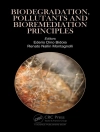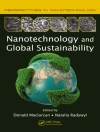During the past thirty years considerable efforts have been made to design the synthesis and the study of molecular semiconductors. Molecular semiconductors – and more generally molecular materials – involve interactions between individual subunits which can be separately synthesized. Organic and metallo-organic derivatives are the basis of most of the molecular materials. A survey of the literature on molecular semiconductors leaves one rather confused. It does seem to be very difficult to correlate the molecular structure of these semiconductors with their experimental electrical properties. For inorganic materials a simple definition delimits a fairly homogeneous family. If an inorganic material has a conductivity intermediate between that of an 12 1 1 3 1 1 insulator 10- n- cm- ) and that of a metal (> 10 n- cm- ), then it is a semiconductor and will exhibit the characteristic properties of this family, such as junction formation, photoconductivity, and the photovoltaic effect. For molecular compounds, such simplicity is certainly not the case. A huge number of molecular and macromolecular systems have been described which possess an intermediate conductivity. However, the various attempts which have been made to rationalize their properties have, more often than not, failed. Even very basic electrical properties such as the mechanism of the charge carrier formation or the nature and the density ofthe dopants are not known in detail. The study of molecular semiconductor junctions is very probably the most powerful approach to shed light on these problems.
J.-J. Andre & J. Simon
Molecular Semiconductors [PDF ebook]
Photoelectrical Properties and Solar Cells
Molecular Semiconductors [PDF ebook]
Photoelectrical Properties and Solar Cells
Dieses Ebook kaufen – und ein weitere GRATIS erhalten!
Sprache Englisch ● Format PDF ● ISBN 9783642700125 ● Herausgeber J.M. Lehn & C.W. Rees ● Verlag Springer Berlin Heidelberg ● Erscheinungsjahr 2012 ● herunterladbar 3 mal ● Währung EUR ● ID 6381107 ● Kopierschutz Adobe DRM
erfordert DRM-fähige Lesetechnologie












